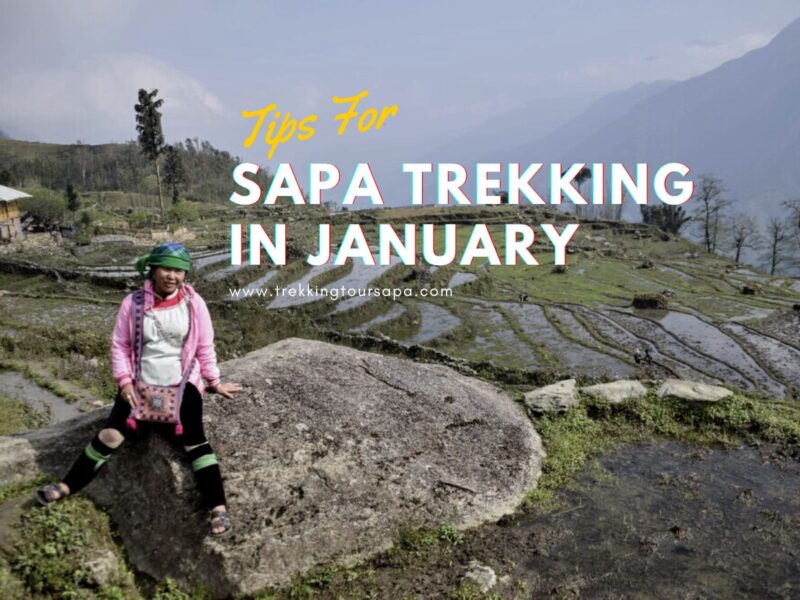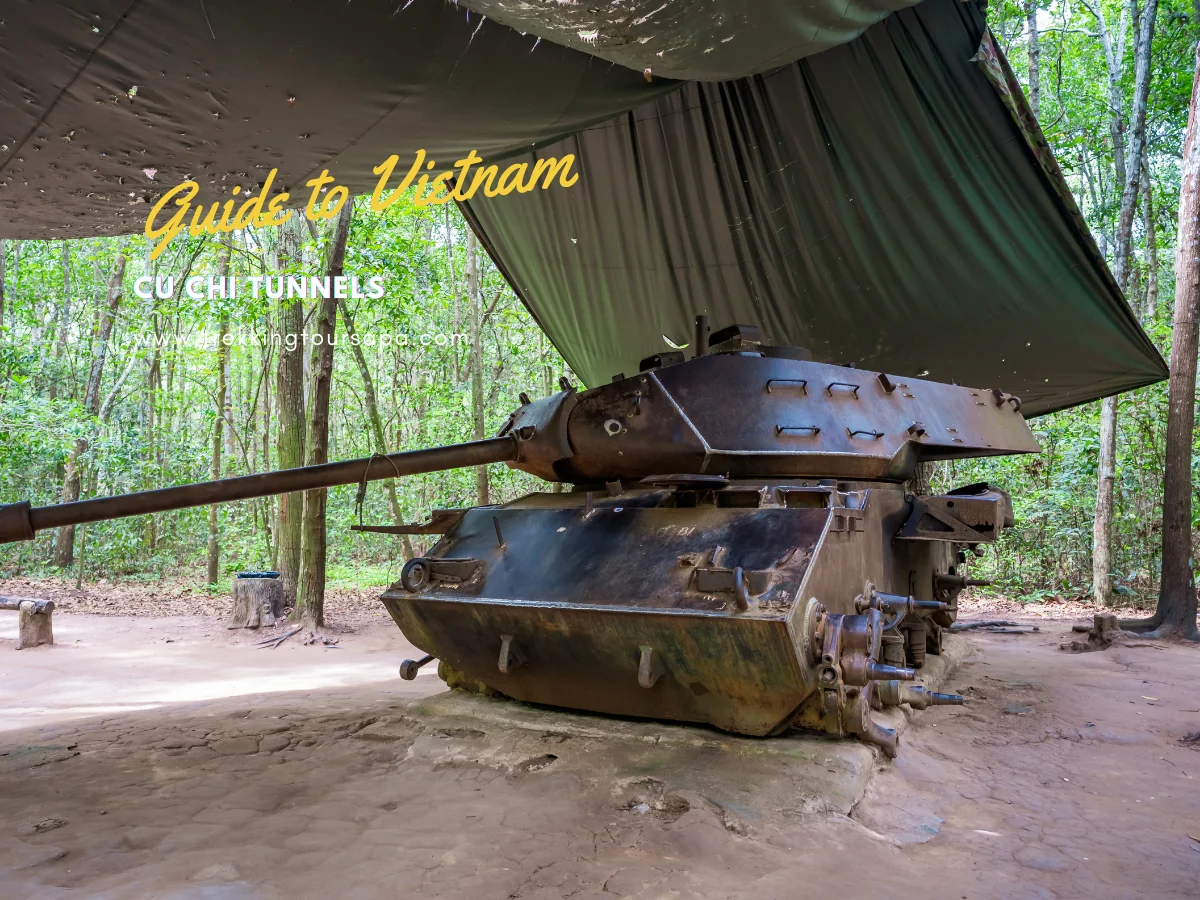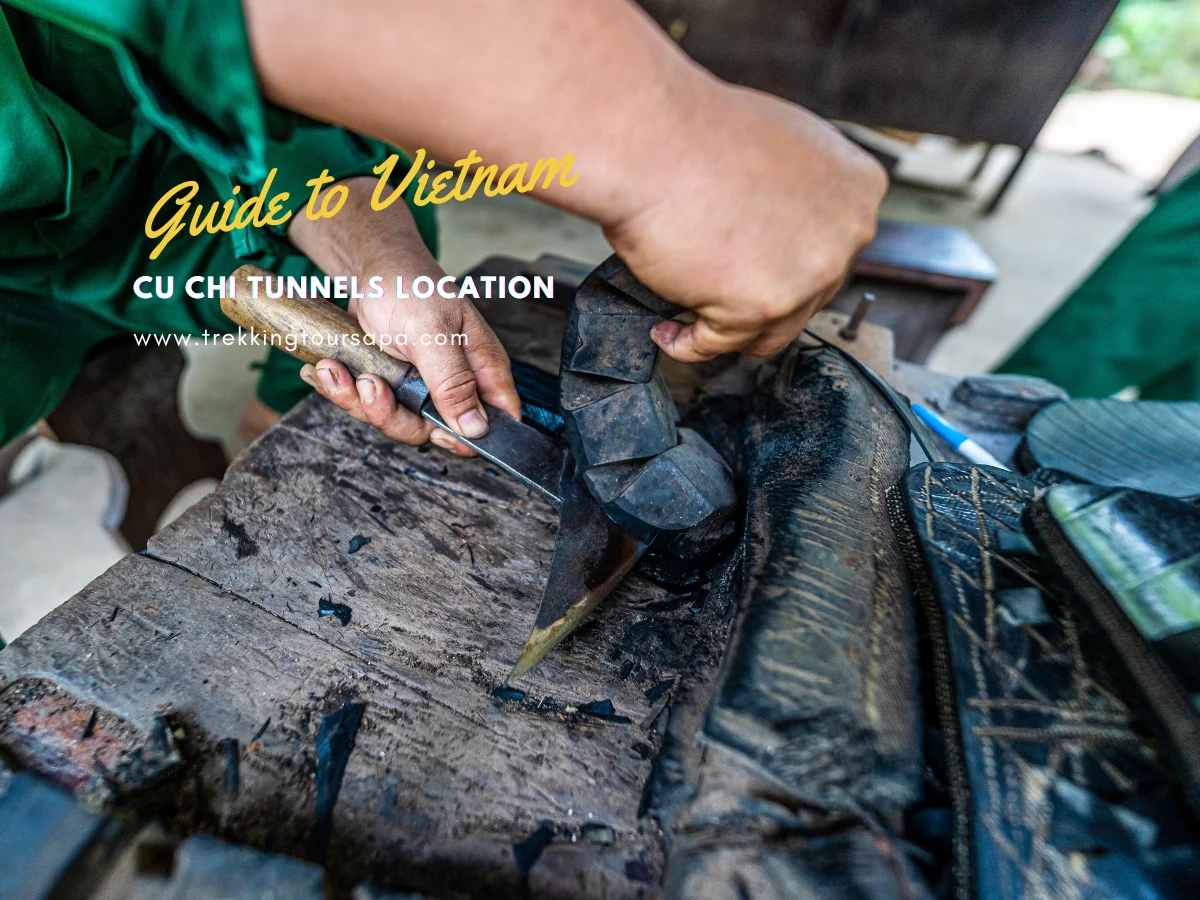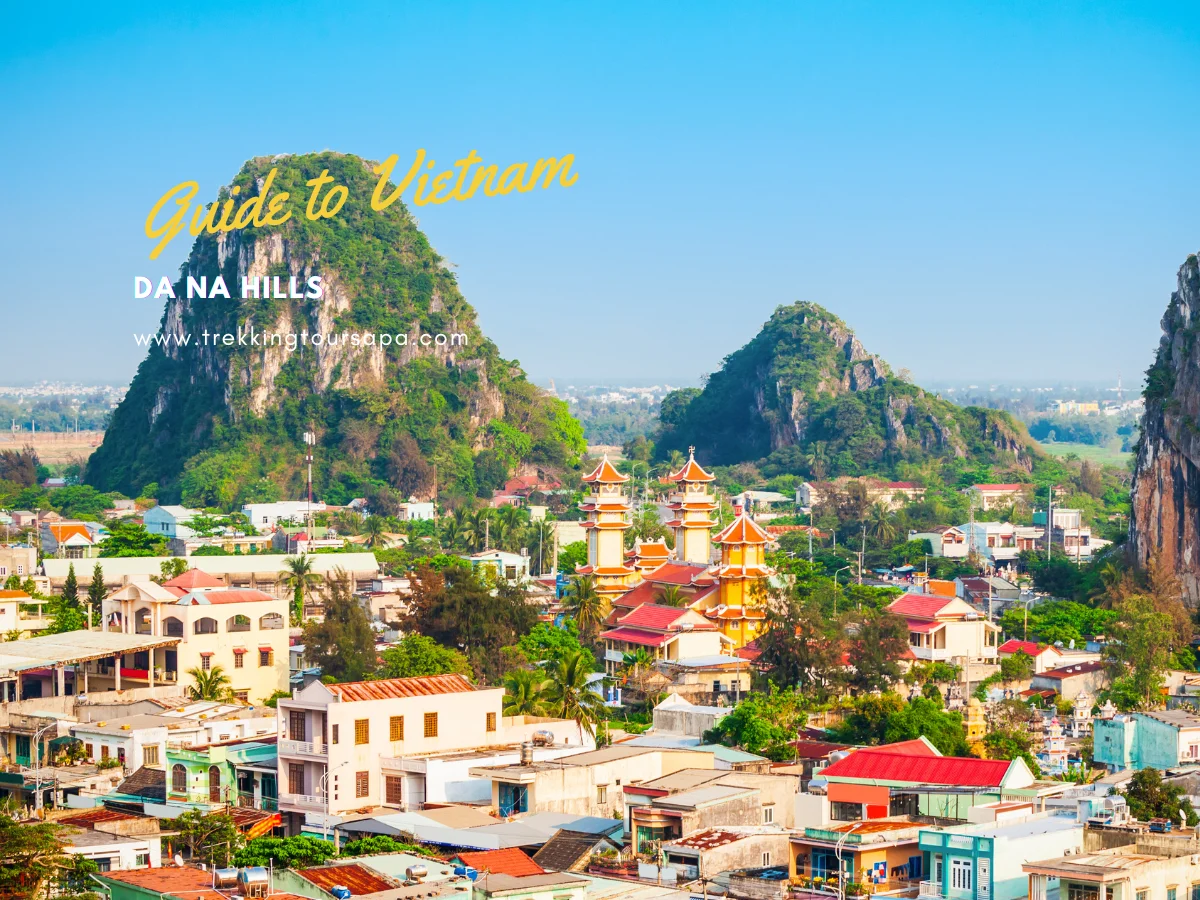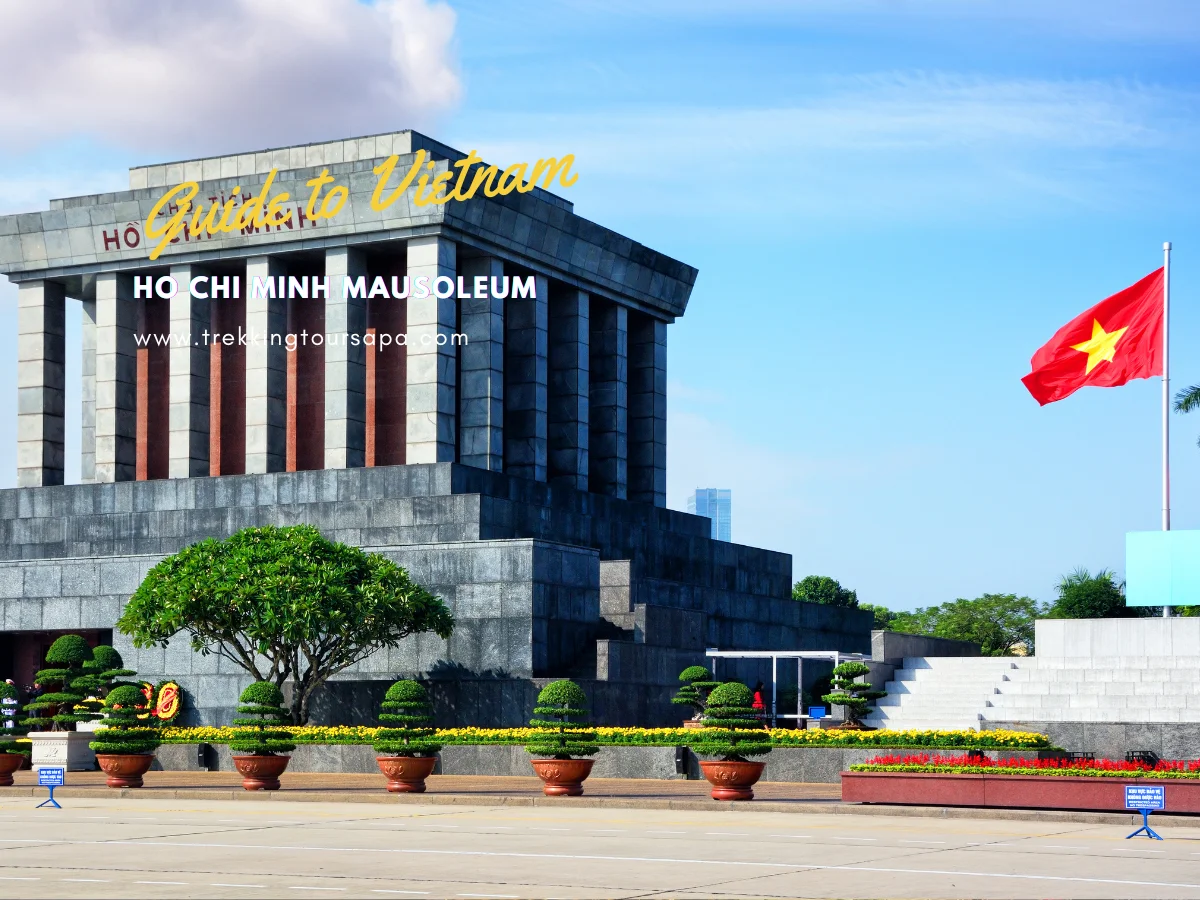As a local person who has been born and raised in Sapa, I have to say that trekking in Sapa during the month of February is an amazing experience.
The weather is perfect for trekking, and the scenery is breathtaking. In this blog post, I will share my experience trekking in Sapa during February, and I hope that it will inspire you to do the same!
Table of Contents
ToggleSapa Weather in February
The weather in Sapa during the month of February is ideal for trekking. Temperatures are typically mild, ranging from 18°C (64°F) during the day to 7°C (45°F) at night. Sunshine is abundant and there are very few days when it rains, resulting in dry trails and clear skies that make for wonderful views of Sapa’s rugged mountain terrain. Sapa is also blessed with consistent wind patterns which provide relief from the humidity and keep temperatures comfortable.
The terrain of Sapa is also perfect for trekking in February. Sapa’s distinct topography consists of rolling hills, terraced fields, jungle-covered mountains, and picturesque valleys—all of which can be explored on foot or by bicycle. Trails range from easy to difficult, allowing trekkers to customize their experience based on their skill level and desired degree of adventure.
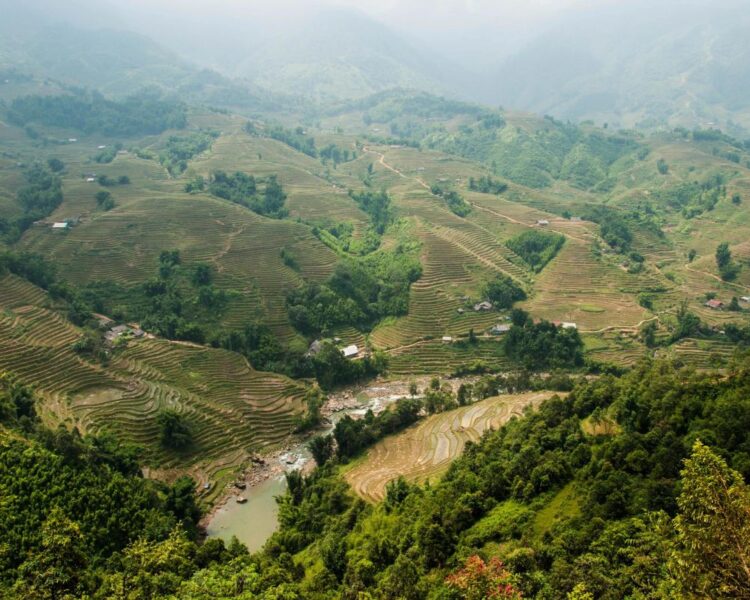
In addition to the incredible scenery that Sapa has to offer, trekkers will also experience unique cultural opportunities. The local Hmong people welcome visitors with open arms and are more than willing to share their stories and customs with those who come seeking knowledge. Trekking through Sapa in February allows travelers to better understand this region’s rich cultural heritage while taking in its stunning landscapes at the same time.
Finally, when considering Sapa Trekking In February, many travelers must remember that Sapa is located near Vietnam’s northern border with China – so visitors should take precautions against cold air coming down from across the border. While temperatures may drop lower than expected due to this phenomenon, it usually only affects a small portion of Sapa’s territory and rarely lasts longer than one or two days at a time.
All in all, Sapa Trekking In February offers an unforgettable experience for those brave enough to attempt it! From breathtaking scenery to unique cultural encounters—there’s no shortage of things to do (and see!) when adventuring through this beautiful corner of Vietnam!
Why trek in Sapa in February
Sapa in February is the ideal time for trekking as it offers the perfect conditions for a safe and enjoyable adventure. The mild temperatures, clear skies, and consistent wind patterns make Sapa an ideal destination for outdoor activities like trekking. Plus, the terrain is varied and suited to different skill levels, making Sapa a great destination for both experienced trekkers and those just starting out.
The scenery of Sapa in February is spectacular – with rolling hills, terraced fields, jungle-covered mountains, and picturesque valleys all offering something unique to explore. Trekking through Sapa during this time of year allows travelers to get up close and personal with nature while taking in some stunning views. Plus, Sapa’s rugged mountain terrain makes it suitable for both long hikes and shorter walks.
Not only does Sapa offer beautiful scenery, but it also provides unique cultural opportunities. Trekking in Sapa allows visitors to connect with the local Hmong people as they share their stories and customs with eager travelers who come seeking knowledge. From witnessing traditional farming techniques to experiencing ancient festivals first-hand – Sapa offers an authentic cultural experience that can’t be found anywhere else!
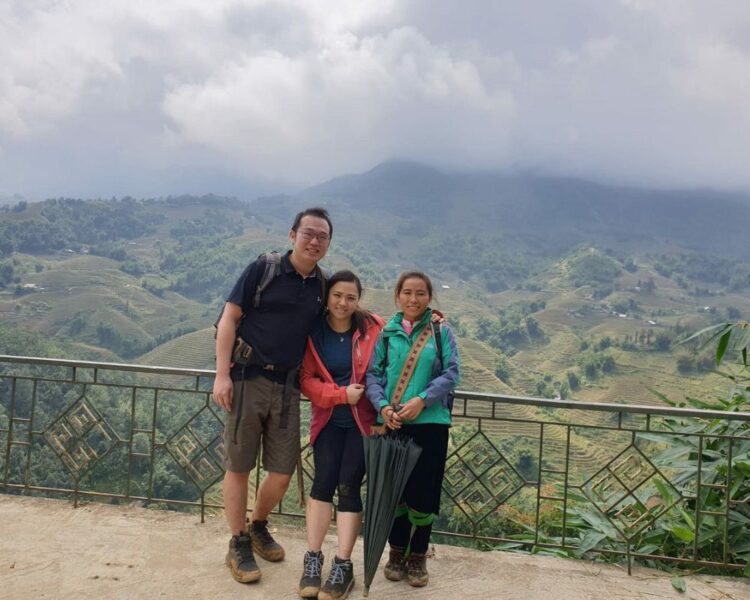
Finally, when it comes to Sapa Trekking In February there are no worries about extreme weather conditions affecting your plans either – since Sapa is located near Vietnam’s northern border with China any cold air coming down from across the border rarely lasts longer than one or two days at a time. This ensures that trekkers can enjoy uninterrupted exploration without worrying about sudden temperature drops or unexpected rainstorms ruining their fun!
All these factors combined make Sapa Trekking In February an unforgettable experience for those brave enough to attempt it! From breathtaking scenery to unique cultural encounters—there’s no shortage of things to do (and see!) when adventuring through this beautiful corner of Vietnam!
What to expect on a trekking tour in Sapa
When embarking on a Sapa Trekking tour in February, travelers can expect an unforgettable experience. Sapa is known for its stunning scenery and unique cultural encounters, making it an ideal destination for those seeking adventure.
On a Sapa Trekking tour in February, visitors can expect to see beautiful rolling hills, terraced fields and lush valleys. The terrain of Sapa is perfect for all levels of trekkers with winding trails to explore and various difficulty levels to challenge even the most experienced adventurers. Sapa’s terrain also offers a range of diverse habitats from jungles, mountain peaks and thick forests – so visitors can expect to experience something new every day!
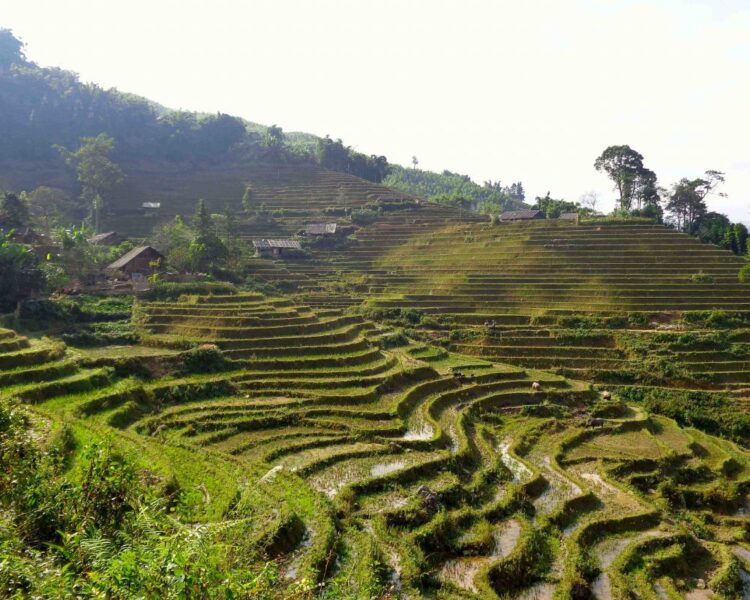
The weather in Sapa during the month of February is perfect for trekking as well. During this time of year temperatures are mild and days usually bring plenty of sunshine – making it the ideal condition for exploring Sapa’s landscape! Plus, Sapa’s wind patterns remain consistent throughout this period so adventurers won’t have to worry about unexpected gusts ruining their outdoor expedition.
But Sapa Trekking tours aren’t just about breathtaking landscapes – they also offer memorable encounters with traditional cultures that can only be found in this part of Vietnam. On a Trekking tour visitors will have the opportunity to meet and interact with local Hmong people who are eager to share their stories with interested travelers. From witnessing traditional farming techniques firsthand to exploring unique festivals – Sapa provides an authentic cultural experience that no other destination can provide!
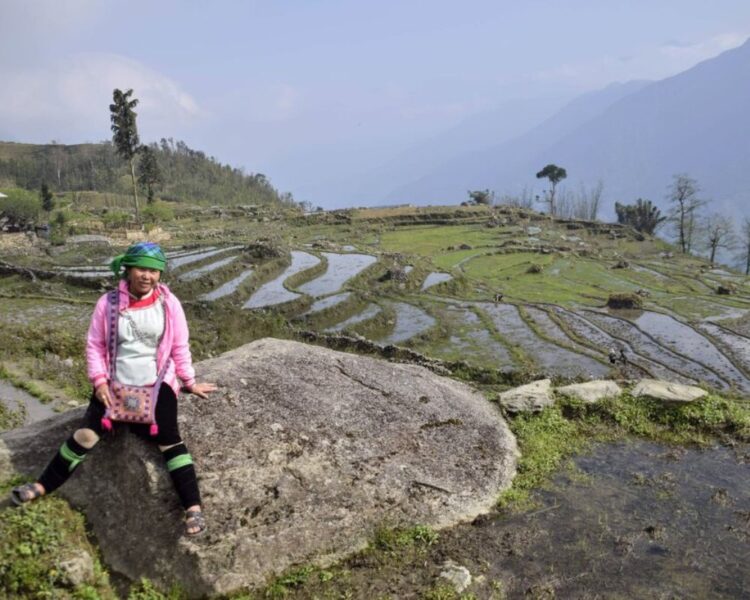
Overall, Sapa Trekking In February offers one-of-a-kind experiences for those brave enough to attempt it! With breathtaking scenery, unique cultural encounters and mild temperatures– there is no shortage of enjoyable activities when adventuring through this beautiful corner of Vietnam!
The different routes available for trekking tours
When it comes to Sapa Trekking tours, there are a variety of routes that visitors can take to explore Sapa’s stunning landscapes. These routes vary in length and level of difficulty, allowing travelers to choose the one that best suits their needs. For example, those looking for a shorter adventure may opt for a half-day trekking tour while more experienced trekkers can embark on longer treks lasting several days.
One popular Sapa Trekking route is the Sapa Valley Trek which takes visitors through Sapa’s beautiful valleys and rice terraces. This route offers breathtaking views of Sapa’s lush landscape as well as cultural encounters with some of Sapa’s colorful local ethnic minorities such as the Hmong and Dao people. The Sapa Valley Trek typically lasts two or three days depending on the speed of the group and is considered a moderate-level trek.
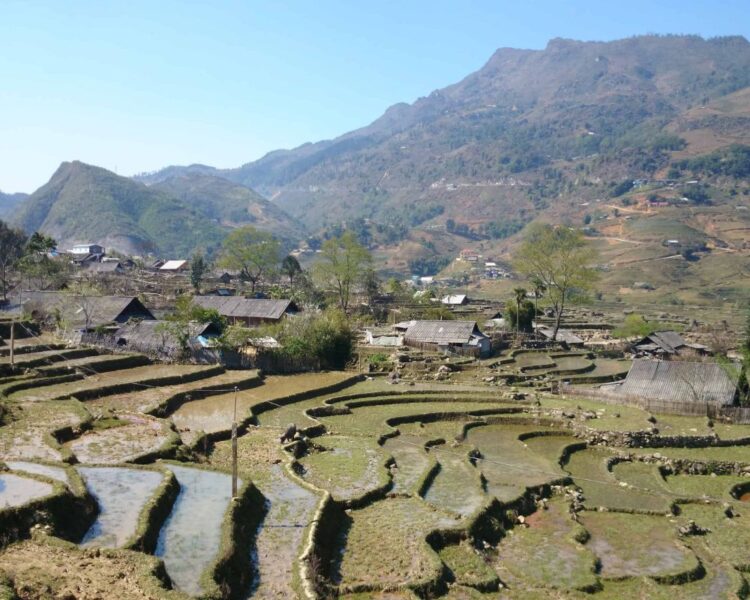
Another great route for Sapa Trekking is Fansipan Mountain. At almost 10,000 feet high, this mountain offers spectacular panoramic views of Sapa’s stunning countryside – making it an ideal destination for adventurous trekkers! Though this trek is more difficult due to its steep ascents, those who reach the summit will be rewarded with breathtaking views that are sure to make all the hard work worthwhile!
For those seeking a bit less strenuous experience can opt for less demanding treks such as Cat Cat Village or Ta Phin Village which offer picturesque views along their paths while still providing opportunities to interact with local hill tribes and appreciate their unique cultures. Both these treks last roughly two hours but provide unforgettable experiences nonetheless!
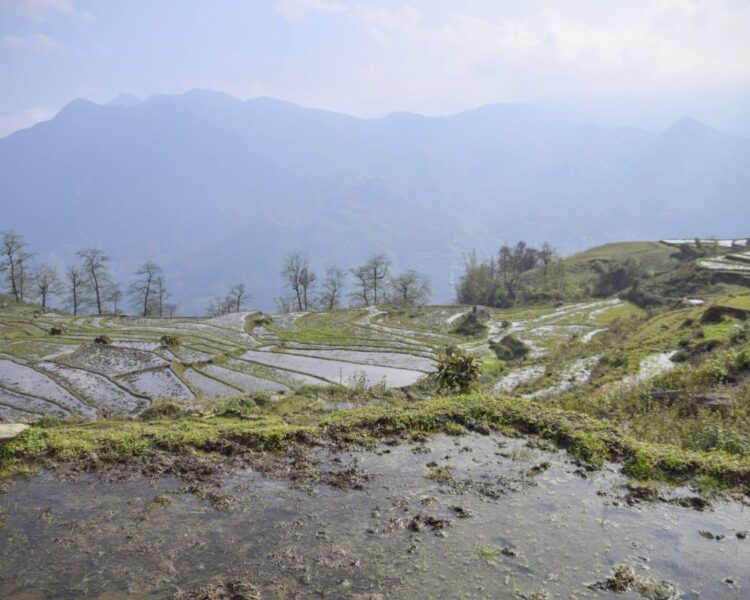
Overall, Sapa Trekking offers something for everyone when it comes to routes – from short walking tours suitable for beginners to multi-day excursions suitable for experienced hikers alike! With so many options available, visitors are sure to find something that suits their needs – whether they seek adventure or just want to take in Sapa’s beautiful scenery!
The top 10 February’s best trekking tours in Sapa
1. Sapa Valley Trek:
This trek is one of the most popular routes in Sapa, taking travelers through Sapa’s lush valleys and beautiful rice terraces. A moderate-level trek that can take two or three days depending on the speed of the group, it provides visitors with an opportunity to interact with Sapa’s colorful local ethnic minorities such as the Hmong and Dao people. Along this route trekkers will also be able to experience breathtaking views of Sapa’s stunning landscape filled with vibrant colors and diverse cultures.
2. Fansipan Mountain Trek:
Standing at almost 10,000 feet high, Fansipan Mountain is a great destination for those looking for an adrenaline rush along their Sapa Trekking adventure. Though more difficult than other treks due to its steep ascents, those who reach the summit are rewarded with stunning panoramic views of Sapa’s countryside – making all the hard work worth it!
Fansipan Hiking 1 Day
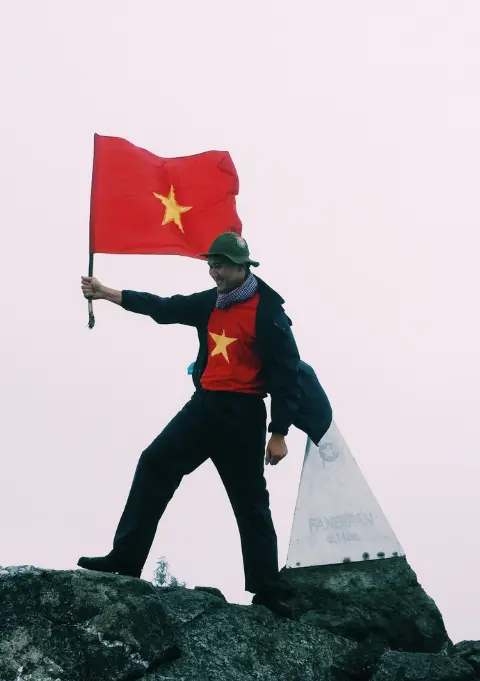
- 1 day fansipan experience
- Moderate to challenging
- Cultural immersion & active adventure
- Visit Fansipan, highest mountain of Indochina
- Private tours
- Vegan-friendly
Fansipan Trekking 2 Days
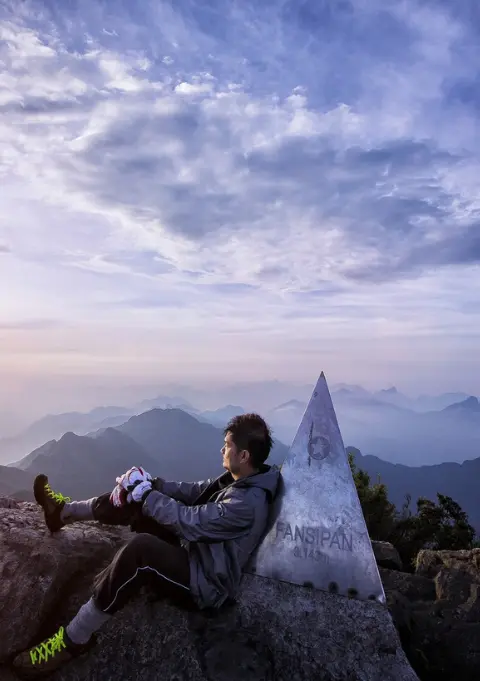
- 2 days 1 night fansipan experience
- Moderate to challenging
- Cultural immersion & active adventure
- Visit Fansipan, highest mountain of Indochina
- Private tours
- Vegan-friendly
Buy Cable Ticket Online
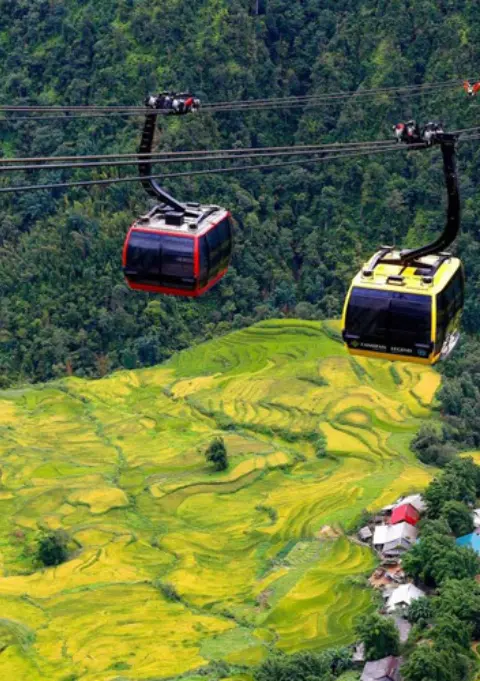
- [QR Code] Buy Fansipan Cable Car Tickets Online
- Non-refundable
- Present your e-voucher
- Fixed-day ticket
- Admission with voucher
3. Ta Van Village Trek:
This trek offers a unique perspective of Sapa’s culture by taking travelers through Hmong hill tribe villages before heading up into Sapa’s untouched mountainous forests. Along this route visitors will be able to explore traditional farming techniques used by local villagers and take in some of Sapa’s most beautiful landscapes. The Ta Van Village Trek usually lasts around two hours and is suitable for beginners since it has a much lower level of difficulty compared to other treks in Sapa.
4. Cat Cat Village Trek:
This trek takes travelers through tranquil mountain streams and rustic Vietnamese villages while allowing them to interact with some of Sapa’s most friendly locals – the Black Hmong People who inhabit these villages around Sapa’s mountain range. Shade from towering pine trees line this path providing reprieve from the sun while still offering spectacular views along the way!
5. Muong Hoa Valley Trek:
This trek takes visitors along Sapa’s majestic Muong Hoa river valley which is home to many ethnic minority communities including Red Dzao, Tay, Xa Pho and Hmong people among others! It also offers unique flora and fauna making it a great spot for nature lovers as well as those interested in learning about more about Vietnam’s diverse cultural heritage! The Muong Hoa Valley Trek usually takes 2-3 days depending on how far you wish to explore – making it perfect for those wanting an extended adventure!
6. Khau Vai Love Market Trek:
Khau Vai Love Market is an annual festival held between two neighboring hill tribes in laocai province – Khau Vai village and Lung Phin village – where members from both sides come together to exchange goods, music, song and dance while also participating in matchmaking activities! A true embodiment of Vietnam’s cultural diversity, this event only happens once each year so make sure you don’t miss out on this amazing opportunity by embarking on a Khau Vai Love Market trek during February!
7. O Quy Ho Pass Trek:
If you’re looking for a longer adventure then look no further than O Quy Ho Pass Trek which stretches across 26km over four days! This challenging yet rewarding journey will reward you with breathtaking scenery as you traverse through winding paths and high elevation passes set against vast skies filled with stars at nightfall! Plus, during your travels you’ll be able to meet and greet friendly locals who reside near O Quy Ho pass – giving you firsthand insight into Vietnam’s rich cultural heritage!
8. Tram Ton Pass Trek:
Considered one of the best treks in all of Southeast Asia – Tram Ton Pass offers visitors incredible view points overlooking vast terraced fields dotted with tiny hamlets below that seem like they were taken out of a fairytale book! Adventurers will also get the chance to experience first-hand how nature works as they traverse through streams, dense forests full of wildlife before finally reaching Tram Ton Pass’ peak where they can admire some truly stunning landscapes shared only between birds flying above them!
9. The Y Linh Ho, Lao Chai and Ta Van Treks:
They are some of the Sapa’s most popular trekking routes – perfect for those looking to get out of their comfort zone and explore Sapa’s stunning landscapes! This trek starts in Y Linh Ho, a village located at the foot of Sapa’s Fansipan Mountain and is home to the Black Hmong people. From here, visitors will be able to explore Sapa’s spectacular rice fields and learn about traditional farming techniques used by locals before finally arriving at Tavan village where they can enjoy breathtaking views of Sapa Valley as well as mingle with some of Sapa’s most friendly locals!
10. Ma Tra Village & Heaven Gate Hillside Trail:
Last but not least we have Ma Tra Village & Heaven Gate Hillside Trail which combines both culture & landscape experiences into one enjoyable package! Starting off at Ma Tra village visitors
Sapa 1 Day Tours
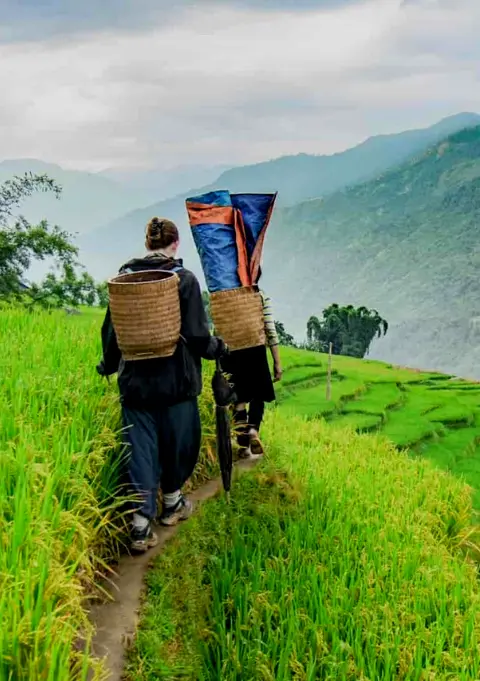
- 1 day experience
- Moderate to challenging
- Cultural immersion & active adventure
- Rice fields, valleys & villages
- Private tours
- Vegan-friendly
Sapa 2 Day Tours
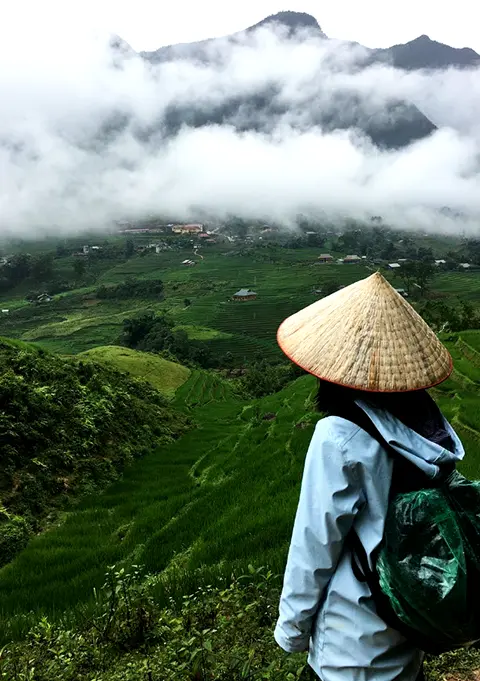
- 2 days 1 night experience
- Moderate to challenging
- Cultural immersion & active adventure
- Mountains, valleys, rice fields and villages
- Private tours
- Vegan-friendly
Sapa 3 Day Tours
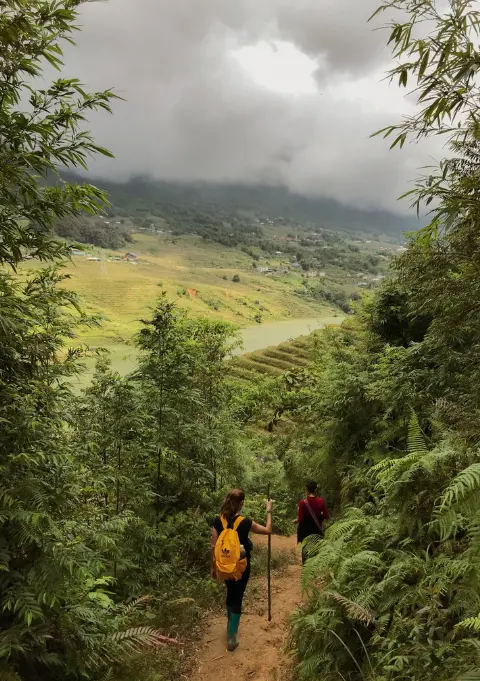
- 3 days 2 night experience
- Moderate to challenging
- Cultural immersion & active adventure
- Mountains, valley, rice fields & villages
- Private tours
- Vegan-friendly
Sapa 4 Day Tours
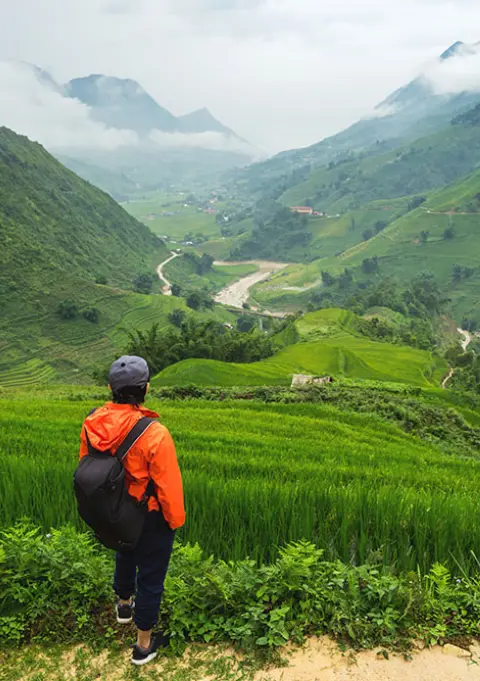
- 4 days 3 night experience
- Moderate to challenging
- Cultural immersion & active adventure
- Mountains, valleys, rice fields & villages
- Private tours – Less Touristic
- Vegan-friendly
How to prepare for a trekking tour in Sapa
Trekking in Sapa, Vietnam is a truly remarkable experience that all types of adventurers should embark on. Before you get started, however, it’s important to make sure that you’re properly prepared so that you can have the most enjoyable trek possible. Here are some essential tips for how to prepare for a trekking tour in Sapa:
1. Get the Right Gear:
Make sure that you’ve got all of the necessary gear for your Sapa trek such as good quality walking boots or shoes, waterproof clothing, a warm hat and gloves and a lightweight backpack. Other items such as insect repellent, sunscreen, hand sanitizer and a water bottle are also recommended. Additionally, if you plan on spending more than one hour out on the trails then be sure to pack snacks and an extra layer of clothing in order to stay comfortable throughout the day!
2. Research Your Route:
Sapa is home to numerous different trekking routes – from easy walks through rice fields up to two or three-day hikes over mountains passes – so it’s important to do your research before setting off! Make sure that you know exactly which route you want to take as well as its difficulty level so that you can adjust your packing accordingly.
3. Get Fit:
While Sapa’s treks don’t require extremely high levels of fitness – it is still beneficial for trekkers to build up their stamina prior to their tour by undertaking physical exercises such as jogging or going on smaller walks closer to home. This will help ensure that they have enough energy during their Sapa trek and can enjoy every minute of their time spent outdoors!
4. Prepare Mentally & Physically:
Trekking in Sapa can be mentally and physically taxing at times – especially if visitors are not used to longer treks with high elevation traverses – so it’s important for them to have realistic expectations about what they can achieve during their tour! Additionally, they should also prepare themselves mentally by having positive self-talk (e.g., “I am capable of doing this”) whenever they feel like giving up during their trek!
5. Pack Lightly:
Sapa’s trails can become quite difficult if visitors overload themselves with too much gear – making it hard for them to navigate around obstacles or ascend up steep terrain sections – so try packing only the essentials when preparing for your Sapa trekking tour! Remember that there are local shops located throughout Sapa where you can purchase any additional supplies needed during your trip – making it unnecessary (and unadvisable!)to overpack before setting off!
6. Book an Experienced Guide:
Last but not least make sure that you book an experienced guide who knows Sapa inside out in order for your trekking experience in Sapa to be even more enjoyable! Not only will they show you secret spots across Sapa’s mountains but they will also provide safety tips throughout the duration of your journey helping make sure that your time spent outdoors is both safe and exciting!
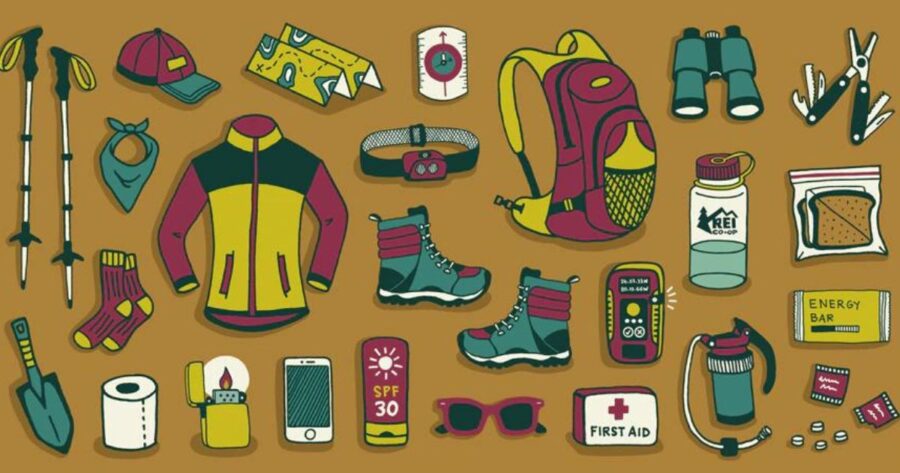
Best Assistant For Your Trek
What to take with you on your trekking tour
When embarking on a Sapa trekking tour, it is important to be prepared with the right items and equipment. Here are some essential items to take with you on your Sapa trekking tour:
1. Clothing & Footwear:
Make sure that you pack clothing and footwear that is appropriate for the terrain and weather conditions. It is best to wear layered clothing that can easily be adjusted as temperatures vary throughout the day, as well as waterproof and windproof outer layers in case of rainfall or strong winds. As for footwear, make sure that you have good quality walking boots or shoes which provide sufficient ankle support and can handle rough terrain.
2. First Aid Kit:
A fully stocked first aid kit should always accompany you on any Sapa trekking tour. This should include basic items such as band-aids, antiseptic wipes and creams, sunscreen, insect repellent, pain killers and anti-inflammatory medication in case of any minor injuries or illnesses during the hike. Additionally, make sure to pack any essential medication that may be needed during your trip – such as inhalers or antihistamines – just in case!
3. Snacks & Water:
It is important to stay hydrated whilst out on Sapa’s trails – so always carry a water bottle with you which can be filled up from local streams or from water fountains along the way. Additionally, it is recommended to pack light snacks such as energy bars or dried fruit which will help replenish your energy levels throughout the day.
4. Map & Compass:
For longer Sapa treks it is highly recommended to bring a map and compass with you so that you know exactly where you are – especially if there are no signs indicating trail names or direction markers along the way! Additionally, having a map will also allow visitors to plan their route before they set off – making sure they get the most out of their Sapa trekking experience!
5. Camera & Binoculars:
Don’t forget to take a camera or binoculars with you so that you can capture all of Sapa’s stunning landscapes and fascinating wildlife! Whether its capturing dramatic mountain views or taking closeups of rare birds – having these items with you will help visitors remember Sapa’s beauty long after their trek has finished!
By following these steps visitors can guarantee that their Sapa trekking tour will be an enjoyable and memorable experience – so don’t forget to ensure that all of these items are packed before setting off into the wilderness!
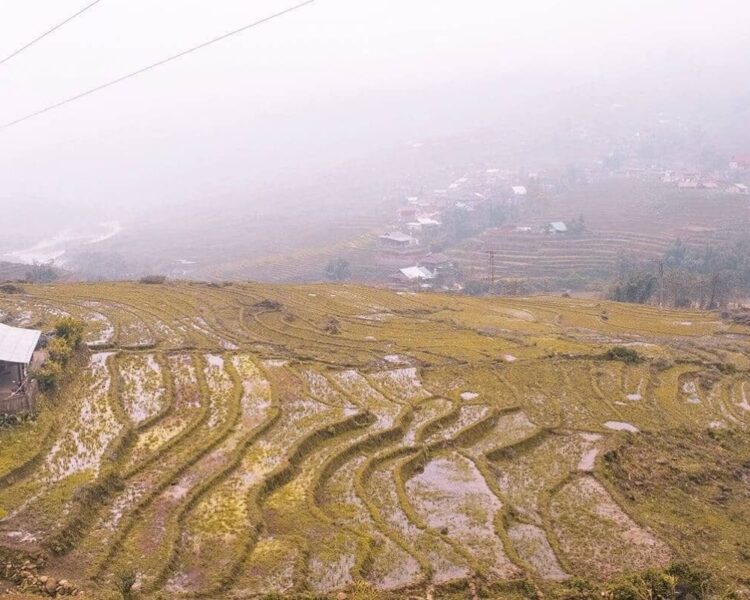
Best Assistant For Your Trek
How much does a trekking tour cost in Sapa
The cost of a Sapa trekking tour can vary depending on the length and type of tour you choose. Generally, day tours from Sapa to nearby villages last between 5 – 6 hours and cost around $25 per person, whereas overnight trips to more remote areas may cost up to $60 or more. Local guides typically charge between $15-30 for day trips, while multi-day excursions may range anywhere from $50-$100 per person. The price may also depend on the number of people participating in the tour and on additional services such as accommodation and meals.
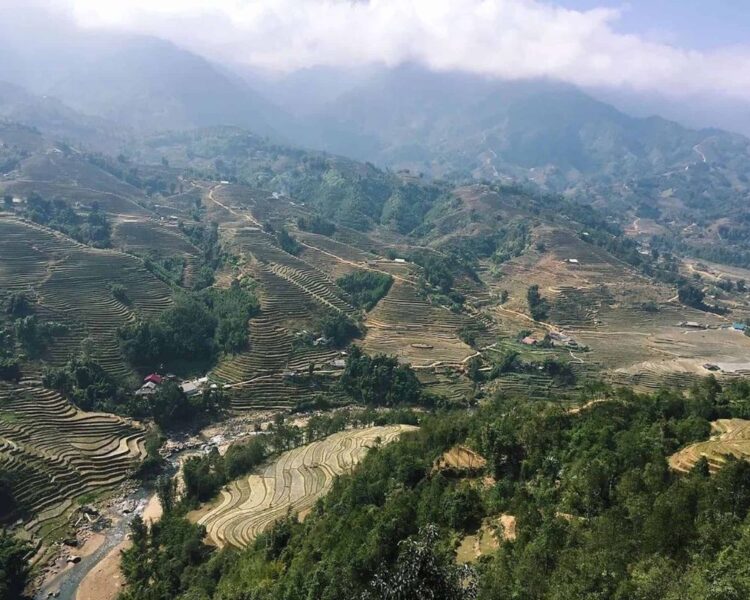
When planning a Sapa trekking tour, it is important to factor in additional costs such as transport to Sapa itself, equipment rental fees, food and drinks during the trip, as well as entrance fees if visiting any sites along the way. Depending on your budget and preferences you can opt for local homestay accommodation or luxury hotels – both of which will increase the overall cost of your Sapa trekking experience.
Sapa 1 Day Tours

- 1 day experience
- Moderate to challenging
- Cultural immersion & active adventure
- Rice fields, valleys & villages
- Private tours
- Vegan-friendly
Sapa 2 Day Tours

- 2 days 1 night experience
- Moderate to challenging
- Cultural immersion & active adventure
- Mountains, valleys, rice fields and villages
- Private tours
- Vegan-friendly
Sapa 3 Day Tours

- 3 days 2 night experience
- Moderate to challenging
- Cultural immersion & active adventure
- Mountains, valley, rice fields & villages
- Private tours
- Vegan-friendly
Sapa 4 Day Tours

- 4 days 3 night experience
- Moderate to challenging
- Cultural immersion & active adventure
- Mountains, valleys, rice fields & villages
- Private tours – Less Touristic
- Vegan-friendly
Tips for Sapa Trekking In February
1. The weather in Sapa during February is unpredictable, so be prepared for both rain and sun
2. Dress in layers so you can adjust to the changing temperatures
3. Make sure to bring a good pair of hiking boots – the trails are often muddy and slippery
4. Bring plenty of water and snacks, as well as a map of the area
5. Don’t forget your camera! The scenery in Sapa is breathtakingly beautiful
6. If you’re not familiar with trekking, ask a local guide to show you the best routes
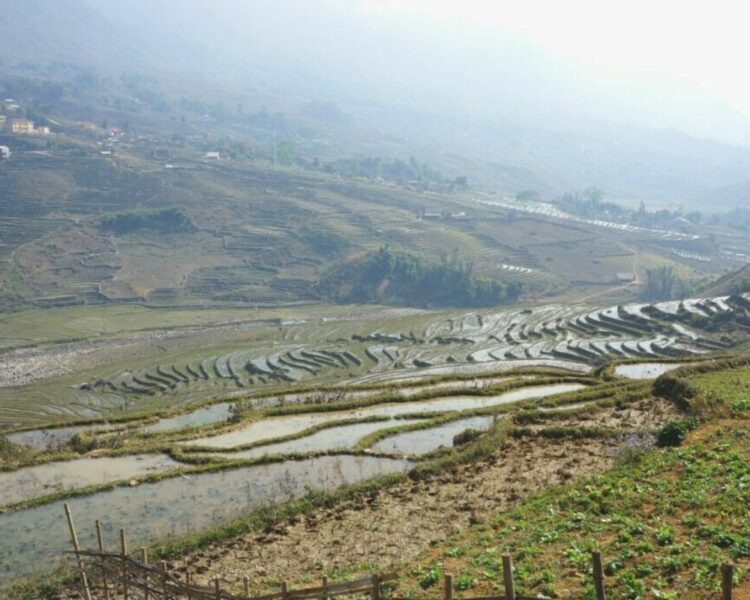
How to get a bus from Hanoi to Sapa?
Traveling from Hanoi to Sapa is a great way to experience the beauty of the northern Vietnamese countryside. There are several different ways to make the journey, including taking a bus and taking a train.
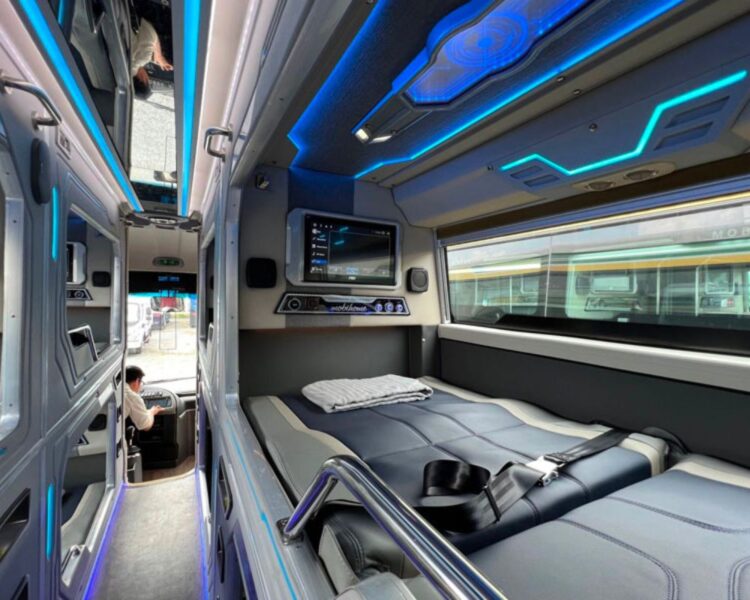
If you choose to take a bus, there are several options available. You can book tickets with an online travel agency, or at one of the many ticket offices located throughout Hanoi. The most popular route for buses is from Hanoi’s My Dinh station to Sapa Town. The trip takes about 5 hours and costs around 160,000 dong for a one-way ticket. Buses leave daily between 8am and 3pm and some include breakfast or lunch on board. Make sure you arrive at least 15 minutes prior to departure in order to exchange your ticket for a boarding pass!
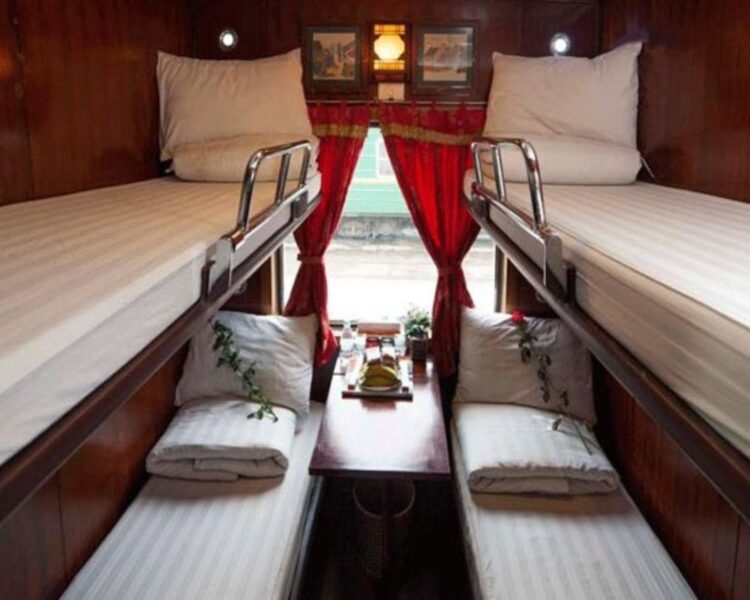
Alternatively, another great option for travelers is to take the overnight train from Hanoi’s Gia Lam Railway Station to Lao Cai Railway Station, which is just 10km away from Sapa Town itself. This option allows travelers more time during their journey as they can enjoy the views while sleeping overnight in their cabin. Tickets range in price depending on the type of cabin you book – prices start from around 100,000 dong per person for an economy seat up to 900,000 dong for a luxury private cabin that sleeps up to four people – but all passengers will receive complimentary snacks and beverages during their ride. Trains typically depart nightly between 9pm – 11pm and arrive between 4am – 6am the following morning.

Whichever option you choose, you’re sure to have an amazing experience traveling from Hanoi to Sapa!
Sapa Trekking In February is a great way to get in touch with nature and explore the stunning scenery of North Vietnam. It offers a unique opportunity to trek through the majestic terraced rice fields, witness traditional customs, and discover unique cultures. The trek is both challenging and rewarding, as it takes you through some of the most incredible landscapes imaginable. The experience also gives you a chance to interact with locals, learn about their way of life and share stories with them. February is an ideal time for embarking on this journey as the weather is milder than that of other months, making it easier to traverse the trails. Plus, you will be able to take advantage of local festivals and festivities that occur during this time. All in all, Sapa Trekking in February provides a truly unforgettable experience that will certainly stay with you for many years to come!
Sapa 1 Day Tours

- 1 day experience
- Moderate to challenging
- Cultural immersion & active adventure
- Rice fields, valleys & villages
- Private tours
- Vegan-friendly
Sapa 2 Day Tours

- 2 days 1 night experience
- Moderate to challenging
- Cultural immersion & active adventure
- Mountains, valleys, rice fields and villages
- Private tours
- Vegan-friendly
Sapa 3 Day Tours

- 3 days 2 night experience
- Moderate to challenging
- Cultural immersion & active adventure
- Mountains, valley, rice fields & villages
- Private tours
- Vegan-friendly
Sapa 4 Day Tours

- 4 days 3 night experience
- Moderate to challenging
- Cultural immersion & active adventure
- Mountains, valleys, rice fields & villages
- Private tours – Less Touristic
- Vegan-friendly
